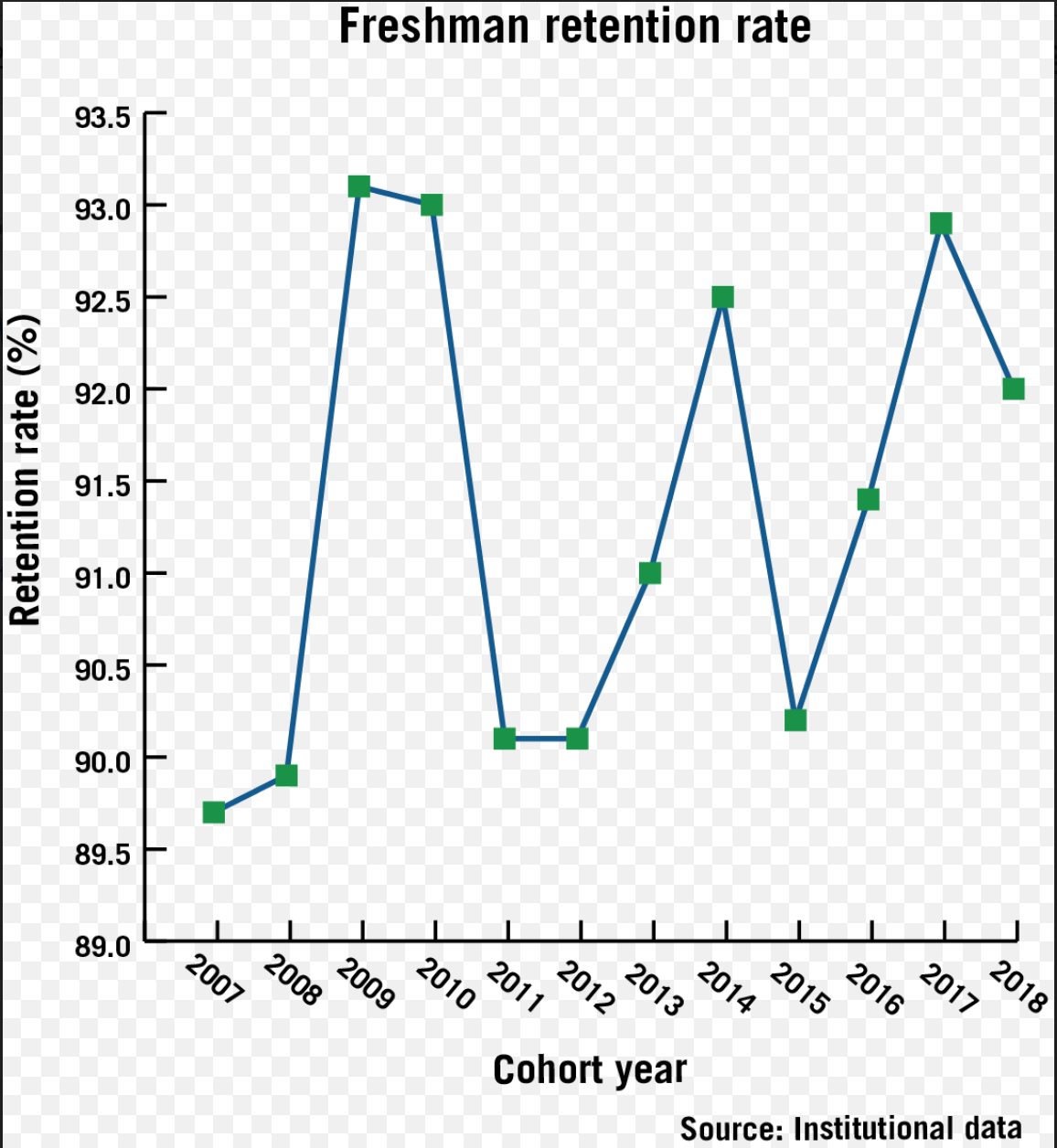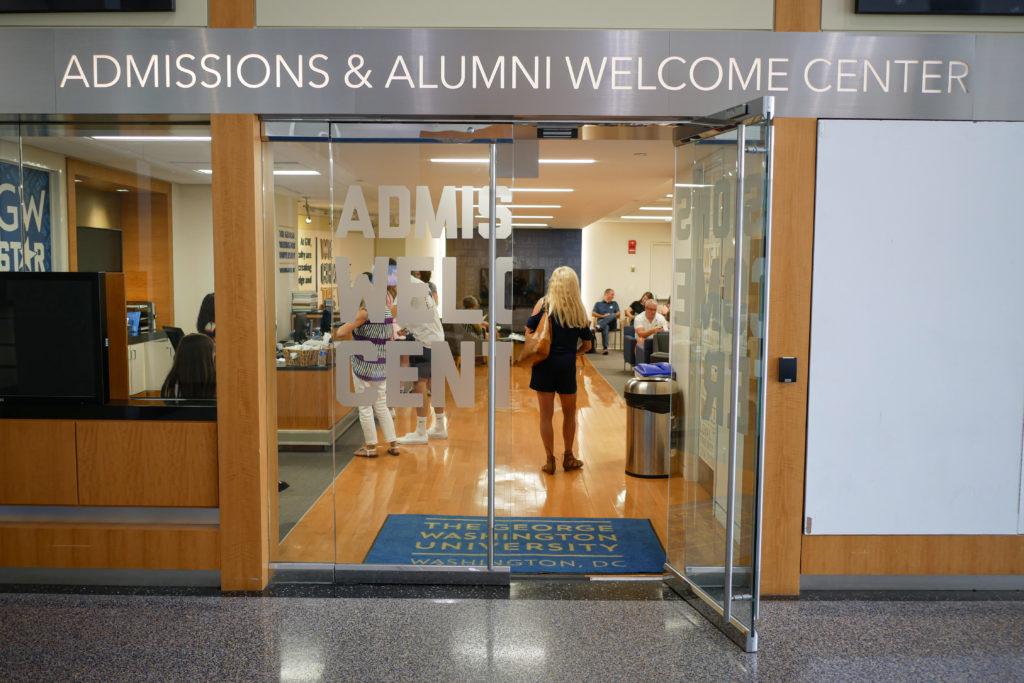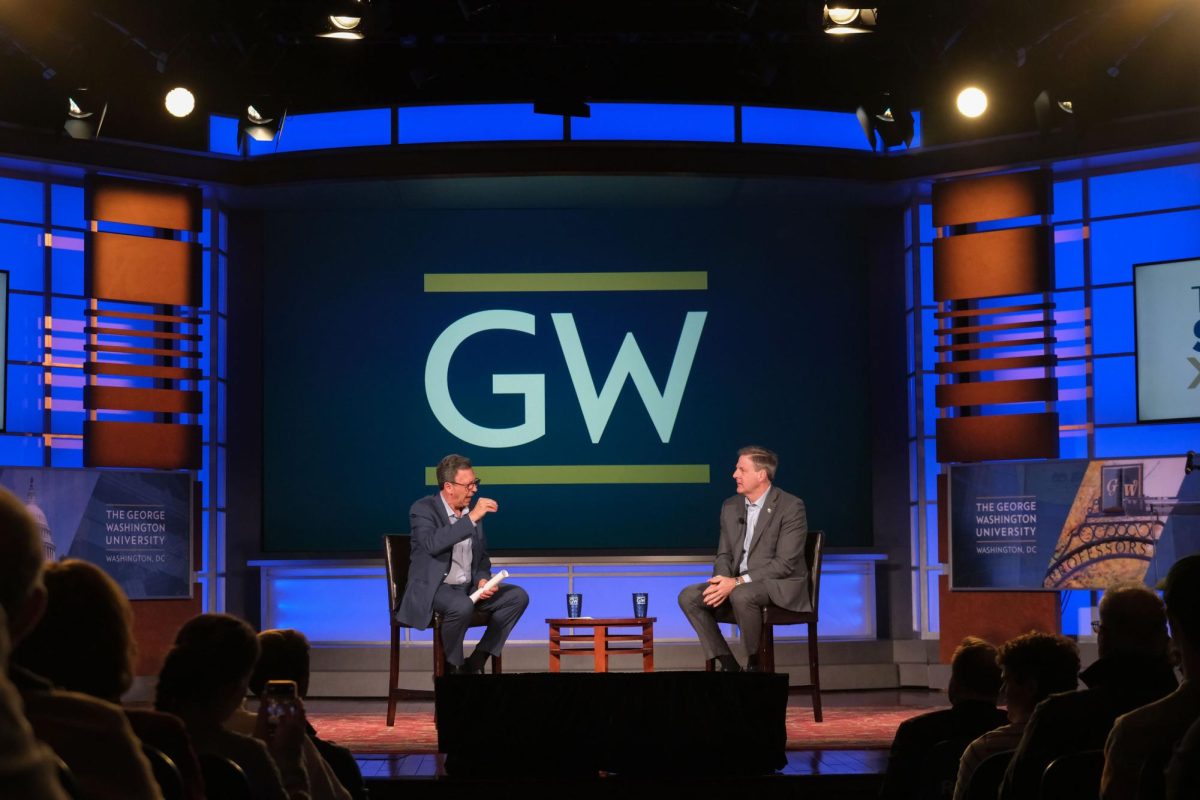The retention rate for the full-time freshman cohort that matriculated in 2018 dipped roughly one percentage point from the previous year.
GW retained 92 percent of the Class of 2022, about one percentage point lower than last year’s retention rate of 92.9 percent – the University’s highest in seven years – according to Joe Knop, the director of institutional research and planning.
After GW dropped three spots in national rankings in part because of a dip in the retention rate from 2014 to 2015, former University President Steven Knapp refocused efforts to boost retention by strengthening “inner-community things” and improving the investigation process surrounding sexual assault.
Officials also hired an inaugural executive director of enrollment retention, Oliver Street, in August 2016 and created the Enrollment Retention Office soon after to improve retention. The office was combined into the Office of Enrollment and the Student Experience in July 2018.
Street departed GW last August.

Alyssa Ilaria | Graphics Editor
GW’s rate has risen in the past couple of years alongside University President Thomas LeBlanc’s push to improve the University’s institutional culture through measures like increasing student dining dollars and allowing all students to take an 18th credit free of charge. LeBlanc also led the Colonial Health Center through its first major overhaul since its 2015 opening, implementing changes like a health insurance mandate and increased free mental health sessions.
Officials also created a faculty advisory group that began meeting in fall 2018 to discuss strategies to increase retention rates, among other topics.
Student affairs experts said an increase in retention rates may reflect frequent administrative efforts to reassess student needs and increased student recognition of officials’ efforts to improve the student experience.
David Ruiter, the associate provost for student and faculty success at the University of Texas at El Paso, said reaching retention figures in the 90 percent range requires a “collective effort” from faculty, students and staff to foster a positive community. He added that faculty interactions with students are the “number one” long-term factor that affects retention – students should feel comfortable talking to professors about topics beyond their performance in class.
“Whatever it happens to be, I would guess that it’s an indicator that your community formation is stronger than ever,” Ruiter said of the retention rate.
He added that strong academic and financial advising services contribute to higher retention figures.
Denny Bubrig, the assistant vice president for student affairs at the University of Southern Mississippi, said GW’s 92 percent retention rate is a “fantastic” statistic. He said the factors that influence retention rates vary depending on a university’s demographics but cited students’ academic preparedness and the availability of support networks for students as key determinants of retention.
“You will see an assessment effort of students who do not continue their career at the institution in question,” Bubrig said. “From there, the institution may make adjustments in physical services, student engagement, further education in financial management, study skills, time management, career pathway selection or something of the like.”





